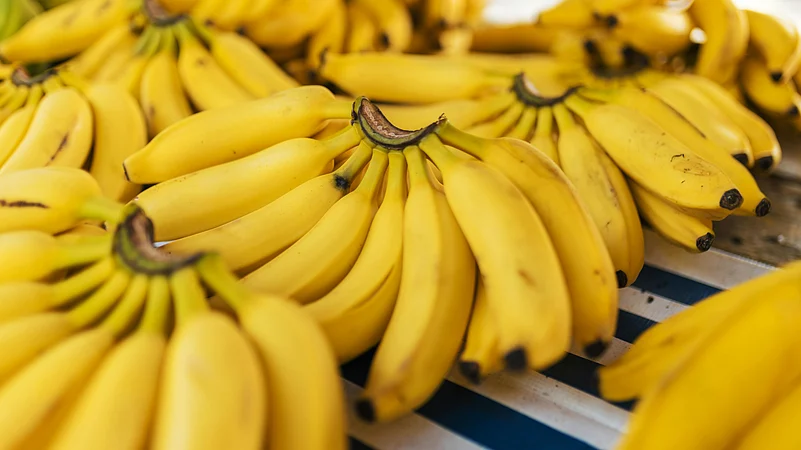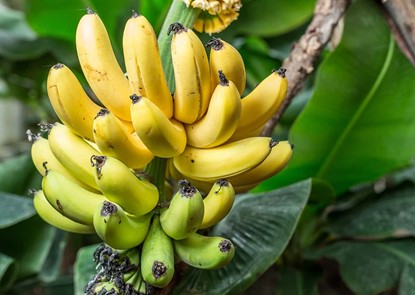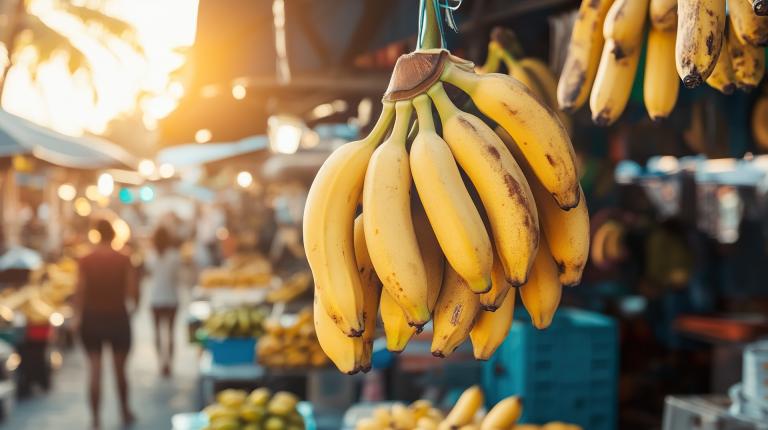Bananas are among the most consumed fruits in the world—nutritious, convenient, and available year-round. But have you ever wondered where most of the world’s bananas come from? The answer lies in a single region: Latin America. Countries like Ecuador, Colombia, Costa Rica, and Guatemala dominate the global banana trade, consistently ranking among the top exporters.
This article explores why Latin America leads in banana exports, examining the historical roots, climatic advantages, production efficiency, infrastructure, global trade ties, and the socioeconomic role bananas play in the region. We’ll also explore the challenges Latin American countries face in sustaining their dominance in a highly competitive, climate-sensitive industry.
1. A Brief History of Banana Cultivation in Latin America

Bananas are native to Southeast Asia, but their rise to global prominence was largely driven by colonial trade and U.S. corporate expansion in Latin America during the 19th and 20th centuries.
The “Banana Republic” Era:
- American companies like United Fruit Company (now Chiquita) and Standard Fruit (now Dole) established massive banana plantations in Central America and northern South America.
- These corporations built railroads, ports, and towns, exerting tremendous political and economic influence—so much so that the term “banana republic” was coined to describe countries whose economies were dominated by banana exports.
- By the mid-20th century, Latin America had become the world’s primary supplier of bananas.
Even after corporate influence waned, the infrastructure and expertise developed during this era laid the foundation for Latin America’s continued dominance.
2. Ideal Agro-Climatic Conditions

Latin America offers perfect natural conditions for banana cultivation:
Tropical Climate:
- Bananas require high humidity, abundant rainfall (1500–2500 mm/year), and temperatures between 26–30°C.
- Coastal lowlands and river valleys in Ecuador, Colombia, Costa Rica, and Guatemala provide such conditions year-round.
Fertile Soils:
- Volcanic and alluvial soils in regions like the Ecuadorian coast and Costa Rica’s Atlantic plain are nutrient-rich, supporting continuous cultivation without heavy synthetic inputs.
Low Elevation and Flat Terrain:
- Flat lands allow for mechanized farming, easier irrigation, and high-density planting.
These climatic advantages give Latin American producers a competitive edge in both yield and quality.
3. Efficient Large-Scale Production Systems
Unlike smallholder-dominated banana farming in Asia and Africa, Latin America has embraced commercial-scale plantation agriculture:
Key Features:
- Farms often exceed 100 hectares, especially in Ecuador and Costa Rica.
- Use of clonal propagation (from suckers or tissue culture) ensures genetic uniformity, making management easier.
- Heavy use of irrigation, fertilizers, and fungicides ensures high yields.
Large farms enable:
- Economies of scale
- Standardized quality for exports
- Easier compliance with international regulations
Yields:
- Average yield in Ecuador: 40–50 tons/ha
- Compared to smallholders in Sub-Saharan Africa: 10–20 tons/ha
This difference in productivity directly contributes to export capacity.
4. World-Class Infrastructure and Export Logistics

Latin America has excellent logistics tailored to banana exports:
Proximity to Global Markets:
- Easy access to Atlantic and Pacific ports enables fast shipment to North America, Europe, and Asia.
- Transit times: ~7 days to U.S. ports, ~12–14 days to Europe.
Cold Chain and Packaging:
- Bananas are picked green and shipped in refrigerated containers at 13–14°C, preserving freshness.
- Facilities for pre-cooling, packaging, and phytosanitary inspection are integrated near farms and ports.
Countries like Costa Rica and Colombia have streamlined their export systems to meet the strict quality standards of buyers in Europe and the U.S.
5. Strong Trade Partnerships and Export Orientation
Banana farming in Latin America is highly export-focused—over 80–90% of production in some countries is sent abroad.
Top Exporters (2024 estimates):
| Country | Exports (million tonnes) | Key Markets |
|---|---|---|
| Ecuador | 6.5 | EU, Russia, Middle East |
| Philippines | 3.2 | China, Japan, South Korea |
| Costa Rica | 2.4 | U.S., EU |
| Colombia | 2.2 | EU, U.S. |
| Guatemala | 2.0 | U.S., EU |
Free Trade Agreements:
- Ecuador and Colombia benefit from trade deals with the European Union, U.S., and China.
- These agreements often reduce tariffs, making Latin American bananas cheaper for international buyers.
6. Vertical Integration and Branding

Several Latin American countries benefit from multinational companies that control:
- Farming
- Harvesting
- Packaging
- Shipping
- Marketing
Leading brands:
- Chiquita (mainly from Costa Rica and Guatemala)
- Dole (Costa Rica, Honduras, Ecuador)
- Del Monte (Guatemala and Costa Rica)
- Noboa and Favorita (Ecuador-based exporters)
This vertical integration ensures consistency, traceability, and brand trust in global markets—giving Latin America a market edge over fragmented producers elsewhere.
7. Government and Institutional Support
Many Latin American governments actively support their banana industries through:
- Export incentives
- Research and extension services
- Disease control programs
- Investment in port and logistics infrastructure
In Ecuador, bananas account for about 2% of GDP and are the country’s largest agricultural export, motivating strong government backing.
In Costa Rica, sustainable certification programs (like Rainforest Alliance) are promoted to boost eco-friendly production and market appeal.
8. Sustainability and Certification Efforts

Latin American exporters are increasingly focused on sustainable banana farming, responding to consumer demand for ethically and environmentally grown produce.
Key Certifications:
- Rainforest Alliance
- Fairtrade
- GlobalG.A.P.
- Organic Certification (EU/USDA)
Costa Rica and Colombia are leaders in certified banana exports, with producers adopting:
- Integrated Pest Management (IPM)
- Soil conservation practices
- Worker welfare and safety standards
These certifications improve access to premium markets and enhance international reputation.
9. Challenges Faced by Latin America’s Banana Industry
Despite its dominance, the industry faces serious challenges:
A. Fusarium Wilt TR4
A devastating fungal disease now affecting banana plantations globally—including recent outbreaks in Colombia. TR4 threatens the Cavendish banana, the main export variety. R&D efforts are ongoing for TR4-resistant varieties.
B. Labor and Wage Issues
Large plantations have been criticized for low wages, long hours, and poor working conditions. Ethical sourcing and labor reforms are under increasing pressure from advocacy groups and consumers.
C. Price Volatility
Banana prices on the world market can be unstable due to oversupply, weather events, or geopolitical issues—affecting farmer income and export revenues.
D. Climate Change
Increased frequency of hurricanes, droughts, and floods is affecting yields. Countries are investing in climate-resilient practices, but the risks are growing.
10. The Road Ahead: Innovations and Resilience
To maintain their leadership, Latin American banana producers are adopting:
Biotech Research:
Developing disease-resistant varieties using genetic modification and CRISPR.
Smart Farming:
- Drone-based monitoring
- Precision irrigation
- Weather forecasting systems
Sustainability Models:
- Zero-waste packaging
- Carbon-neutral certification
- Agroforestry integration for biodiversity protection
These strategies aim to keep Latin American bananas competitive, sustainable, and resilient in the decades to come.
Conclusion
Latin America leads the world in banana exports because of a perfect combination of factors: ideal growing conditions, large-scale efficient farming, strong infrastructure, government support, and established global trade networks.
From Ecuador’s coastal plantations to Costa Rica’s sustainable farms, bananas are more than just a crop—they are economic lifelines, export powerhouses, and cultural symbols. Yet, climate change, disease threats, and ethical concerns mean that the industry must continue evolving.
As the global appetite for bananas grows, Latin America’s ability to innovate, adapt, and lead responsibly will determine whether it remains the banana capital of the world.




Leave A Comment